[Photo credit: Ole Johnsen]
Much of my research focuses on a rare breed of magmatic rocks known as agpaitic nepheline syenites. These rocks are fascinating to geologists, mineralogists and geeks alike, for many reasons. To me, the most obvious reason is their incredible mineralogical diversity. Hundreds of minerals were first discovered from these rocks; sodalite, aegirine, arfvedsonite, eudialyte are only a few examples. Famous agpaitic complexes in terms of the number of new mineral discoveries, include Mont St Hilaire in Canada, Lovozero and Khibina in Russia, and Ilímaussaq in Greenland. And when I say mineralogically diverse, I mean that if you pick up any rock from these locations, chances are it contains a mineral that no one has yet identified or named. Also, they’re very pretty and colourful (especially under UV light).

Sodalite syenite with analcime and steenstrupine, Taseq Slope, under long wave UV 
Sodalite syenite with analcime and steenstrupine, Taseq Slope, under long wave UV 
Tugtupite (pink), steenstrupine (brown crystals) and arfvedsonite (black fine grained) 
Tugtupite fluorescing deep pink under short wave UV. Green from uranyl salts, blues from analcime 
Aegirine, Arfvedsonite, Feldspar Pegmatite with Polylithionite mica 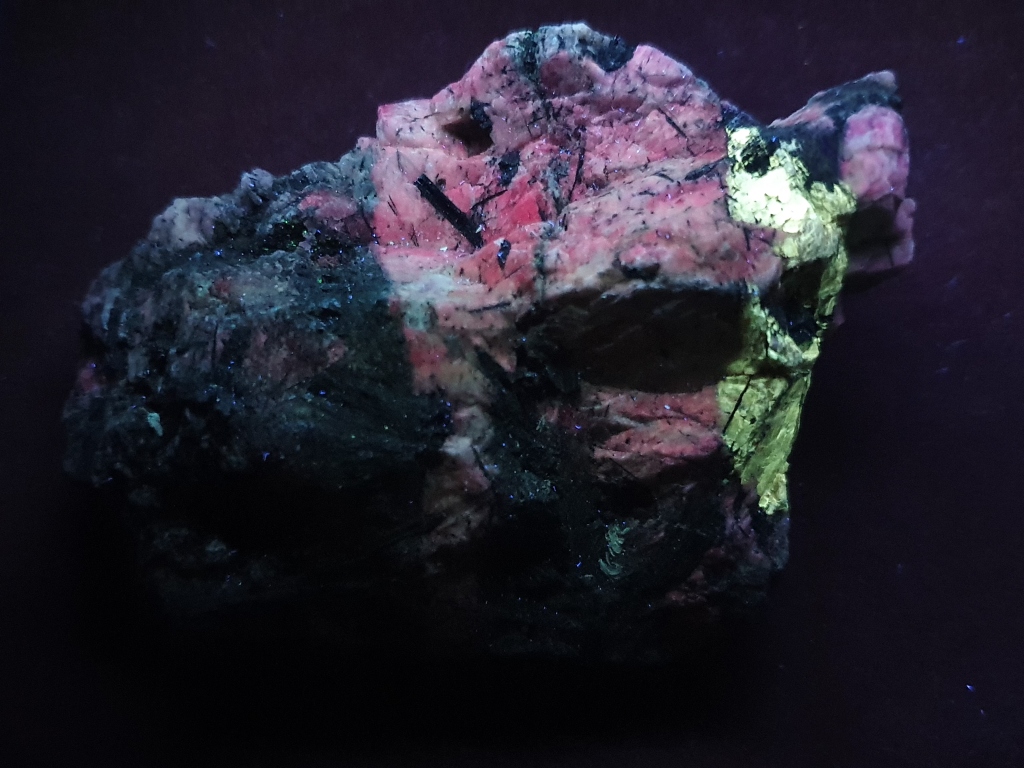
Yellow fluorescence of Polylithionite. Pink feldspar 
Sørensenite, a Na-Bi-Sn silicate, fluorescing light blue 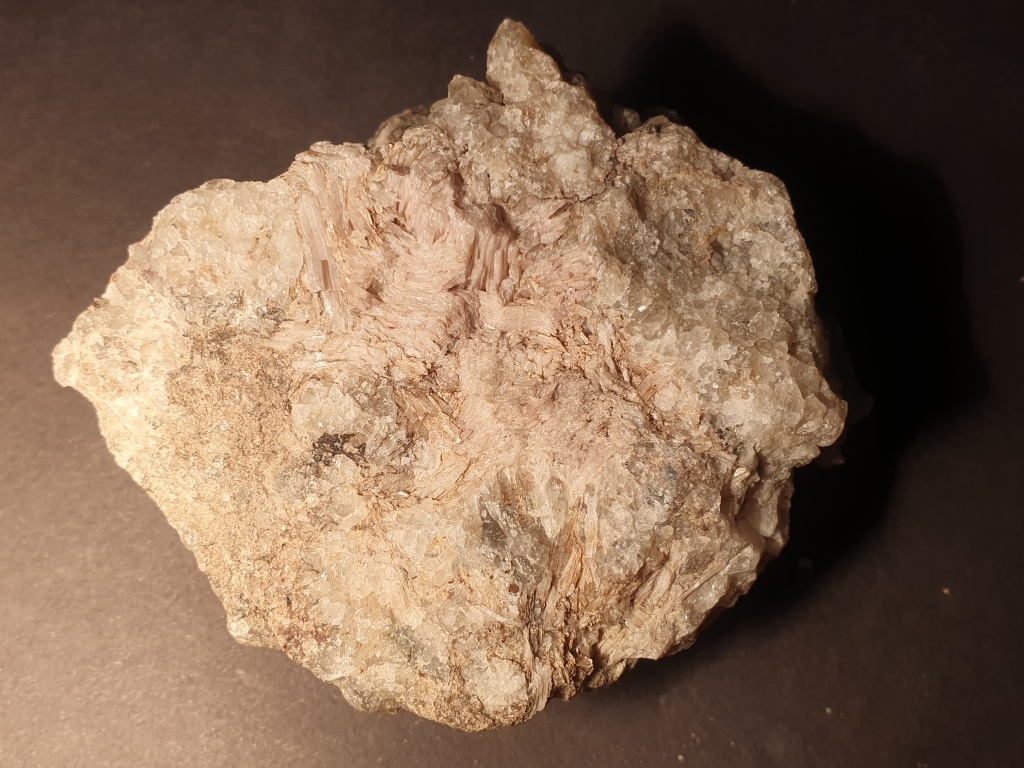
Sørensenite, a Na-Bi-Sn silicate, forming light pink bladed crystals
Another reason why we are interested in these peculiar rock types is that agpaitic rocks present one of very few examples where magmatic enrichment processes alone led to the formation of potentially economic ore deposits of elements like Zr, Nb, Ta, Hf, and Rare Earth Elements. For a magma to become so enriched these elements, the magma needs to fractionate extensively and become highly enriched sodium and halogens. This requires a rather unique set of conditions. Normally, sodium and halogens are lost as soon as a fluid phase exsolves from the magma. Only in certain geodynamic settings, such as in continental rifts, magmas may be so reduced that volatiles remain dissolved in the melt until the very last stages. This subsequently increases the solubility of incompatible elements and significantly lowers the crystallisation temperatures. This is partly why agpaitic rocks are relatively rare in the rock record.
The most diagnostic ‘hallmark’ mineral of agpaitic rocks is eudialyte. Eudialyte group minerals are complex sodium-rich zirconosilicates with calcium, iron, manganese, niobium, and rare earth elements. Where most igneous rocks contain zircon or ilmenite as the main hosts for zirconium and titanium (i.e. high field strength elements), agpaitic rocks contain complex sodium and halogen bearing minerals like eudialyte, rinkite (Na-REE-Ti-silicate) and aenigmatite (Na-Fe-Ti-silicate). Eudialyte most commonly occurs as brown, red to pink crystals, such as on the pictures below, but orange and yellow varieties are also known.

Yellow rinkite crystals 
Scenic view in the southern part of the Illimaussaq Complex. 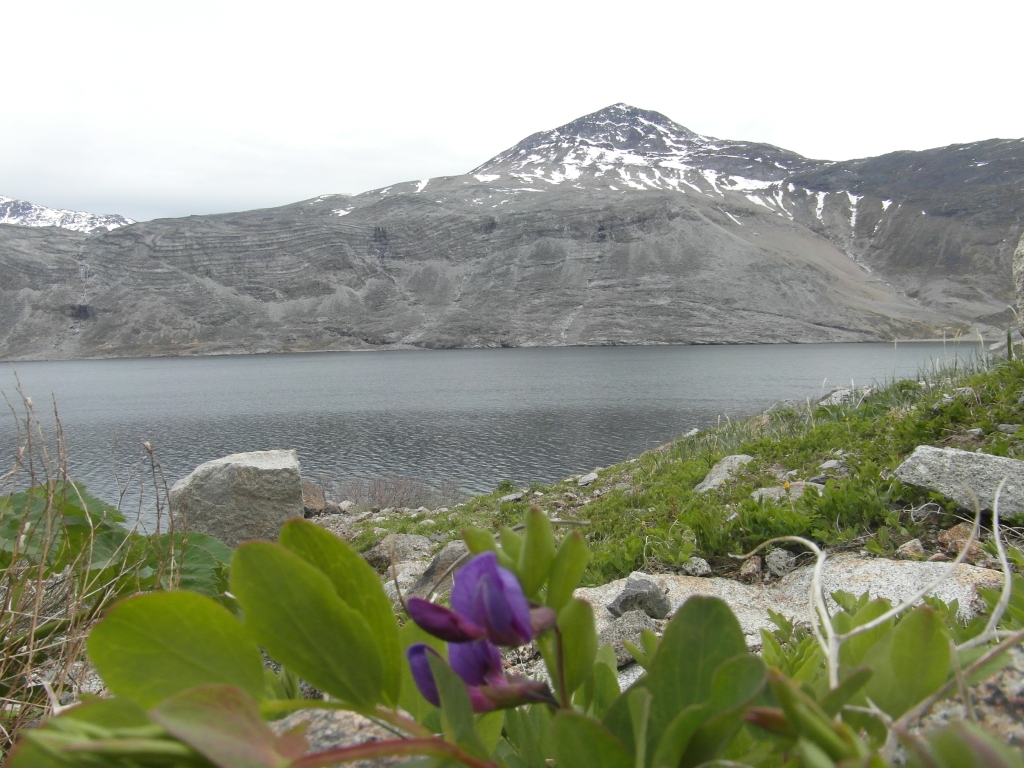
View across the Kangerluarssuk fjord towards Kringlerne. 
Rinkite-bearing pegmatite in the margin of the Ilimaussaq complex 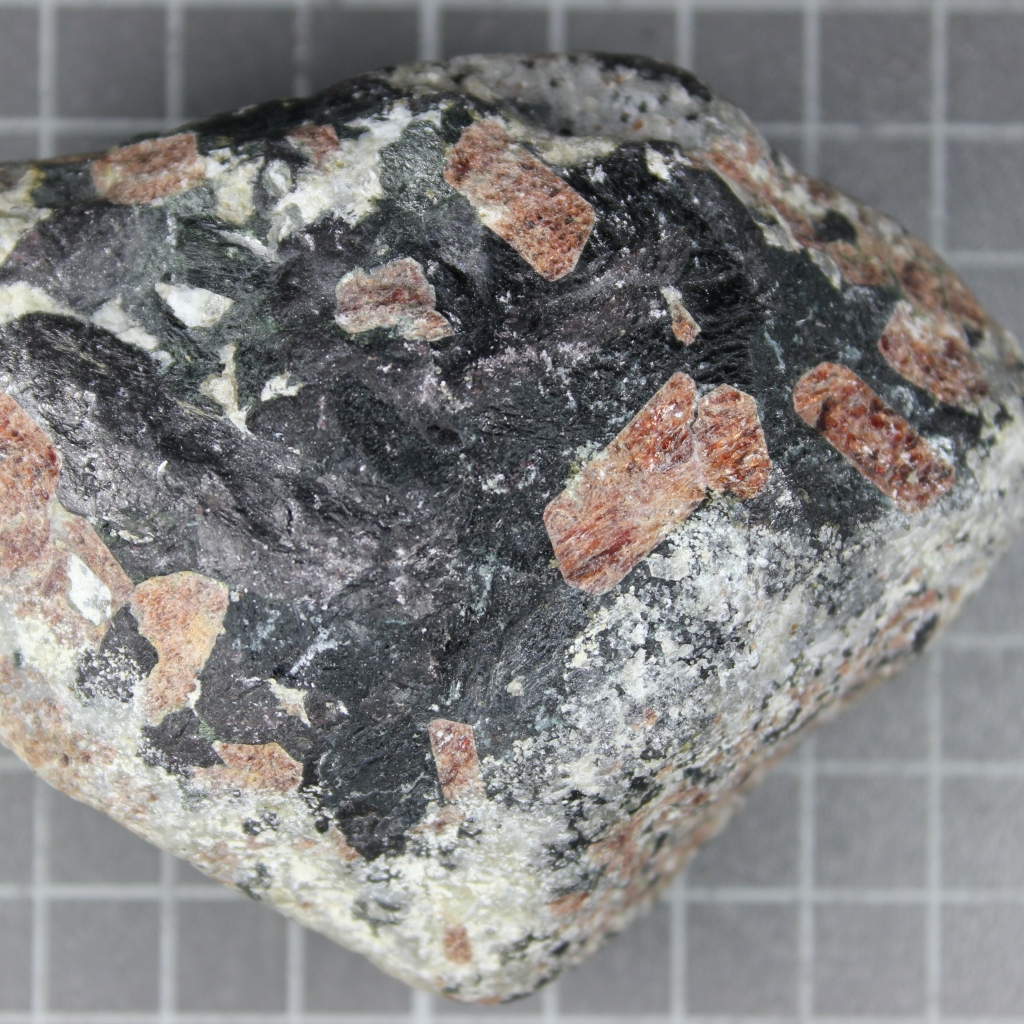
Pegmatite with red crystals of eudialyte in black sodic-amphibole.
Eudialyte group minerals were first discovered in 1819, in the layered Ilímaussaq complex where they occur in large quantities. The mineral has now been reported from over 100 localities world-wide. Because they occur in such large quantities, eudialyte group minerals are considered as potential alternative resources for a range of technology metals, notably the heavy rare earths and niobium. These metals are crucial components in modern-day technologies, ranging from permanent magnets used in smart phone speakers, car engines or big wind-turbines [made of NdFeB], to rare-earth phosphors giving colour to the screens in our electronic devices [using Ce, Eu, Gd, Tb and Y]. Niobium has important anticorrosive properties and significantly enhances the strength, flexibility and general lifetime of steel.
The problem with rare earth elements, as well as niobium, is that their supply chain is controlled by single producing countries. Most of the world’s heavy rare earths come from China, and most niobium comes from a single mine in Brazil. Needless to say, monopoly market positions are risky because disruptions in the supply chain of these metals could strangle global hi-tech industries. For this reason, governments around the world are working closely with geologists and exploration companies to seek and develop alternative resources and to safe-guard global supply chains of these so-called ‘critical’ or ‘strategic’ metals.
Eudialyte-hosted REE deposits, such as in the Ilímaussaq complex, form an attractive alternative and current work focusses on developing cheap and environmentally friendly ways to extract the metals from these minerals.
My research specifically aims to understand how zoned crystals of eudialyte can be used to trace the evolution of the highly evolved magmas from which they crystallised, how they are replaced by secondary minerals when late-magmatic fluids percolate through the rocks after they crystallised, and how this affects the ore potential.
In more recent work, I’ve worked out where inside the complex crystal structure of eudialyte the REE’s are hiding, using synchrotron-based techniques such as XANES and EXAFS. These techniques allow me to probe the type, number and distance of atoms surrounding the REE atoms inside the crystal lattice.

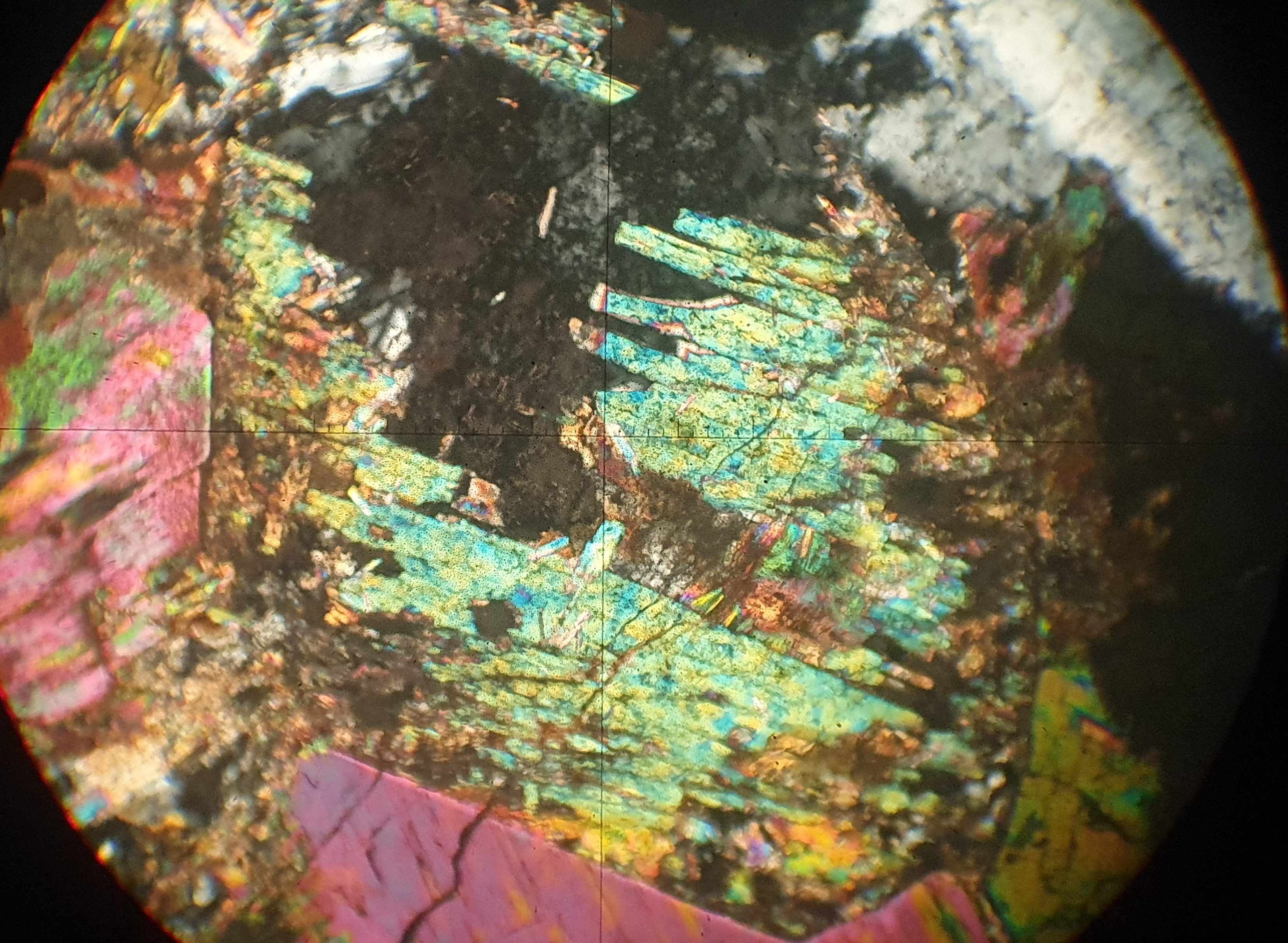

I have some Eudyalite and some apatite , I know that apatite is part of rare earth and I just read your article about Eudyalite 😍👌
We’re should I sell my minerals for the rare earth business ?
LikeLike
Pingback: 25 Red Gemstones & Crystals Names With Meaning: A Symphony Of Love, Passion And Fire - Authentic Jewelry Tips & Buying Guide : TrustedJewelryGuide